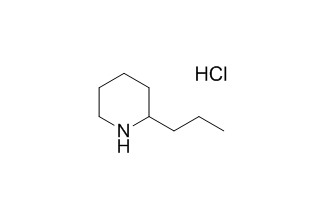Coniine hydrochloride
Reference standards.
Inquire / Order:
manager@chemfaces.com
Technical Inquiries:
service@chemfaces.com
Tel:
+86-27-84237783
Fax:
+86-27-84254680
Address:
1 Building, No. 83, CheCheng Rd., Wuhan Economic and Technological Development Zone, Wuhan, Hubei 430056, PRC
Providing storage is as stated on the product vial and the vial is kept tightly sealed, the product can be stored for up to
24 months(2-8C).
Wherever possible, you should prepare and use solutions on the same day. However, if you need to make up stock solutions in advance, we recommend that you store the solution as aliquots in tightly sealed vials at -20C. Generally, these will be useable for up to two weeks. Before use, and prior to opening the vial we recommend that you allow your product to equilibrate to room temperature for at least 1 hour.
Need more advice on solubility, usage and handling? Please email to: service@chemfaces.com
The packaging of the product may have turned upside down during transportation, resulting in the natural compounds adhering to the neck or cap of the vial. take the vial out of its packaging and gently shake to let the compounds fall to the bottom of the vial. for liquid products, centrifuge at 200-500 RPM to gather the liquid at the bottom of the vial. try to avoid loss or contamination during handling.
ACS Omega.2024, 9(12):14356-14367.
Biomedicine & Pharmacotherapy2022, 153:113404.
Foods.2024, 13(19):3092.
Pharmacognosy Magazine2024, 20(2):632-645.
J Drug Target.2016, 24:1-28
Cytotechnology2022, s10616
Enzyme Microb Technol.2022, 161:110111.
Horticulturae2022, 8(10), 975.
Biochem Pharmacol.2020, 178:114083
Antioxidants (Basel).2022, 11(12):2327.
Related and Featured Products
Physiological Entomology, 1989, 14(2):127-136.
The effect of alkaloids on sugar receptors and the feeding behaviour of the blowfly.[Reference:
WebLink]
The deterrent effect of alkaloids on feeding by the black blowfly Phormia regina Meigen (Diptera: Calliphoridae) was tested by determining tarsal thresholds for mixtures of sucrose and alkaloids.
METHODS AND RESULTS:
The following alkaloids were used: atropine sulphate, berberine sulphate, quinine mono‐hydrochloride, caffeine, yohimbine sulphonic ester, pilocarpine hydrochloride, Coniine hydrochloride and codeine. The same alkaloids were tested electrophysiologically on tarsal chemoreceptors (D hairs). Both behaviourally and electrophysiologically alkaloids reduced response to sucrose. Deterrence and peripheral inhibition could be blocked by increasing the concentration of sucrose. Application of kinetic analyses to the electrophysiological data ruled out competitive, non‐competitive, and uncompetitive inhibition at receptor sites. There is no correlation of thresholds with available data on lipid solubility or octanol/water partition coefficients.
CONCLUSIONS:
The diverse pharmacological properties of alkaloids suggest that there is no uniform limiting mechanism for this multiform array of compounds.



